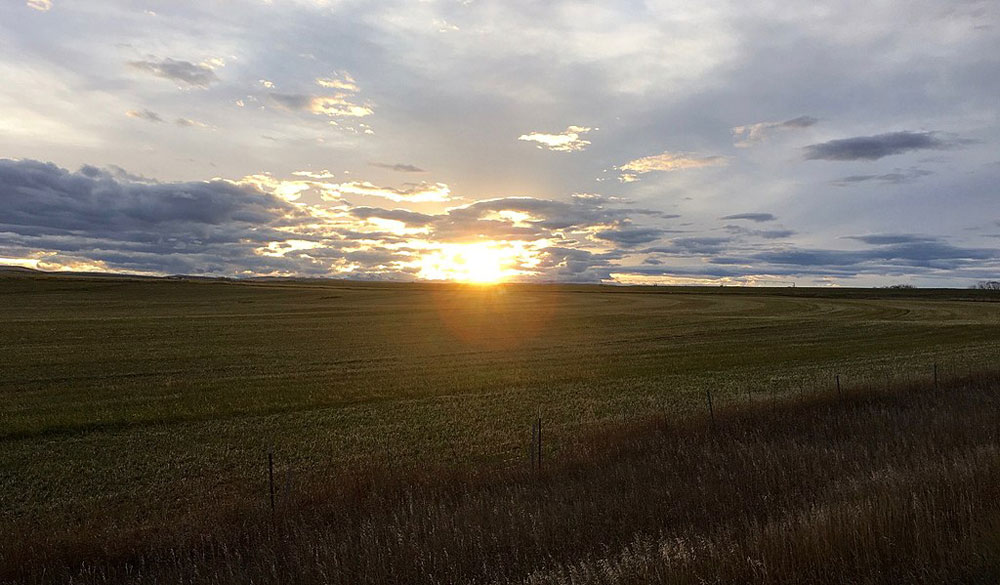
September 15, 2019; Shelterforce
Montana may be home to just 1.06 million people, but according to the 2017 Census of Agriculture, it has 58 million acres of farmland, more than any state in the union save Texas. It also, however, suffered the third highest decline in farmland between 2012 and 2017, losing over 1.6 million acres. Nationally, the nation lost 14 million acres of active farmland in those five years, about a two percent decline. Writing in Shelterforce, Kristin King-Ries notes that “nonindustrial farms are disappearing at an alarming rate. She adds, “Family farmers and ranchers are unable to compete with giants like Monsanto-Bayer and Dow-Dupont that dominate big agriculture in Montana.”
King-Ries works at Trust Montana, a Missoula-based nonprofit that serves as a statewide community land trust, a development that itself is unusual. But more extraordinary still is what she writes about: the development of a network of “farmers, ranchers, lenders, finance professionals, nonprofits, and land trusts” who have come together to develop new tools to preserve rural farmland.
The groups gathered at a summit last February. King-Rees reports that, “Over 50 attendees braved icy roads and temperatures of 10 below zero to spend a day and a half at the summit, talking across professional divides to brainstorm solutions.” The tools that rose to the top, she adds, were “rural investment cooperatives, social capital investment, and community land trusts.”
The first tool, a rural investment co-op, enables family farmers of modest means to make long-term collective investments in their communities by purchasing co-op shares. The Montana Cooperative Development Center in Great Falls provides technical assistance for these co-ops. Executive Director Janice Brown notes that, “Although the annual return to each preferred stockholder will be modest—not exceeding the six percent threshold established by Montana law—the economic benefits to the community at large should be significant.”
Sign up for our free newsletters
Subscribe to NPQ's newsletters to have our top stories delivered directly to your inbox.
By signing up, you agree to our privacy policy and terms of use, and to receive messages from NPQ and our partners.
King-Ries lays out the core principles:
- Each member-owner purchases one share of common stock and is entitled to one vote.
- Purchase of additional shares of nonvoting preferred stock is optional. Members elect a voluntary board of directors to do research into potential investments.
- The cooperative passes capital on to the farm or ranch selected by the board.
- The cooperative charges a fee for dealing with 401k tax and investment limit issues, due diligence, and management of funds.
- The typical co-op board is elected by member-owners; each member-owner has one vote, regardless of the size of their investment—RICs may include multiple classes of members and investors.
A second tool King-Rees features is the social (or “impact”) investment firm. At the summit, Bill Stoddart, a co-founder of HomeStake Venture Partners in Bozeman, noted there are many ways to structure these investments, including “mortgages to farmers, farm-friendly ground leases, lease-to-own arrangements, and low-interest revolving loan funds.” Stoddart tells King-Ries that investors need to be educated to understand that “investing in farmland and farmers, especially those who are committed to rebuilding soil health, is not a high-return proposition; rather, it’s a long-term commitment to establishing and maintaining food security.”
One example King-Ries highlights is Iroquois Valley Farmland REIT (Real Estate Investment Trust), To date, King-Ries reports, it has purchased or financed over 12,000 acres of farmland (including land later sold to tenant farmers) in 14 states, including Montana. Among its services, notes King-Ries, are the following:
- Land purchases for active farmers.
- Five-year leases, with automatic two-year renewal provisions.
- Potential of a lifetime lease.
- Rent based on the purchase price of the land.
- Base rent with a variable rent payment when an operation reaches a certain level of profitability.
- Mortgage funding: five-year fixed-rate terms with interest-only payments.
- Refinancing to consolidate debt.
- Farm equipment financing.
The community land trust is the third tool that King-Rees emphasizes. It should be noted that although the very first US community land trust involved Black farmland in Georgia, today most community land trusts are in cities. However, King-Ries reports that at the summit, “The idea of owning the improvements on the land, not the land itself, sat comfortably with a number of farmers as long as they had land security in the form of a 75-year renewable, inheritable, transferable ground lease.” King-Ries adds that Trust Montana’s presence as a statewide organization makes it possible for rural areas which would otherwise not be able to utilize a community land trust to do so.
The conference, of course, occurred seven months ago. Now comes the hard part of forming committees and taking action steps. But King-Ries is optimistic about their chances, concluding that, “Over the next two years, our organizations and pilot project partners will develop the identified tools so they may be marketed statewide and utilized to fulfill the overarching goal: more Montana farmers with secure land tenure and viable farm businesses.”—Steve Dubb













